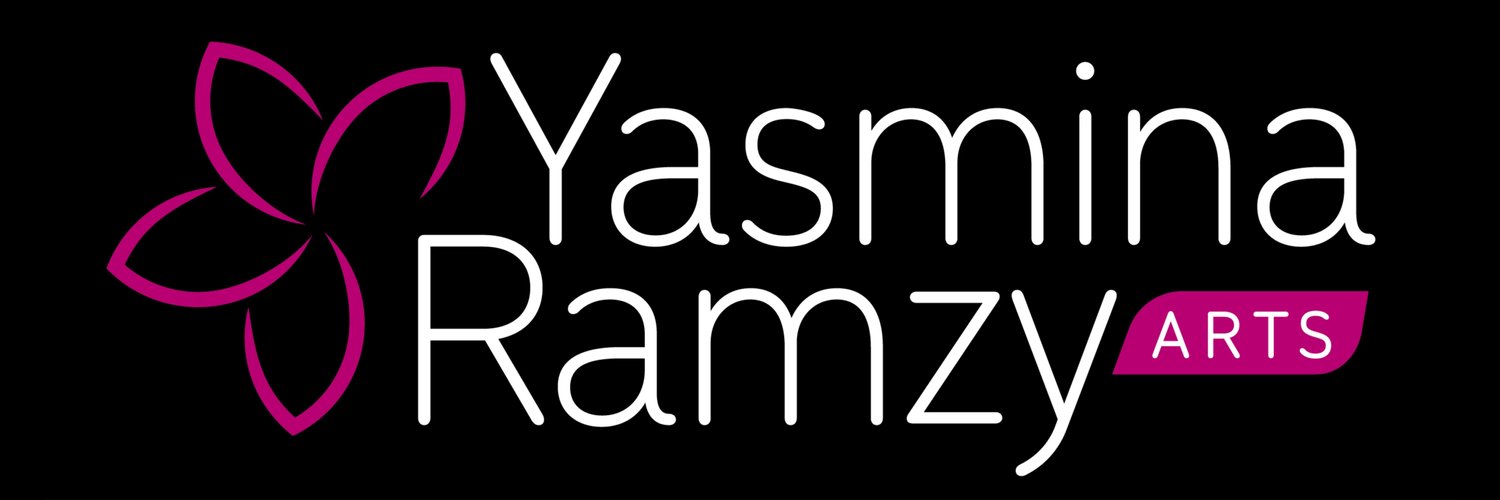Bellydancing and Women's Self-Esteem
by Yasmina Ramzy (written around 2010)
Bellydance's origins in the Middle East are the subject of many debates. The Islamic regimes in North Africa and the Middle East deny that Bellydancing is part of Arabic culture at all, even though every single Arab daughter, sister, mother, grandmother and great-grandmother perform this dance for each other at all family gatherings. The dance is older than Islamic or even Christian culture. A lineage of women called the Awalim (sing. Almeh) are known today throughout the Middle East as prostitutes and dancers, but once these women were highly respected in society for their expertise in all the arts including poetry, literature, dancing, music, and the art of making love. It was their occupation to teach these arts to young women. Though the Awalim have lost their status, politics and patriarchies have not been able to suppress or eradicate Bellydance's vital energies, its celebration of women or its timeless movements.
In the Middle East today and abroad in Arab communities, it is customary to perform the Wedding Procession or Zaffah at all weddings. The Rakiseh or Bellydancer leads the wedding procession from the church or mosque to the reception party. Along the way, she encourages the couple to perform hip movements and to occasionally kiss. Whether the family is Christian or Muslim, this tradition is so deeply ingrained that many mothers feel that if the Bellydancer is not present at the wedding, the couple may not produce babies or experience financial prosperity. Today in small villages, the Bellydancer still leads the newlyweds to the bridal chamber to consummate the marriage rather than taking them to the banquet hall. The rhythm for the wedding march or the Zaffah cannot be found in other Arabic music. At one time, the Bellydancer called upon to lead the wedding procession would have been the temple priestess or perhaps even an Almeh.
Once, while performing at a large Syrian/Armenian family 50th wedding Anniversary gathering, I was brought to tears by an example of the enduring power of Bellydance.
Often the Zaffah is performed at anniversaries as well as weddings, so in the middle of my performance, I went over to the couple to pull them up to dance. As I was approaching, the crowd stopped me with a big "NO" because the wife could not walk, so I was not to embarrass her. But before I could return to the dance floor, she grabbed my arm with a formidable grip. She then firmly placed one hand on the table and used the strength in both arms to help herself rise. Everyone around protested. She gave them a scolding and got herself almost to a standing position. Using all her strength to support herself on the table and my arm, she proceeded to sway her hips from side to side, while beaming at me. The room was silent until she sat down, then it erupted with applause and roars of appreciation as she looked proudly into her husband's wide and bedazzled eyes.
The dance is for women of all ages, and in its natural form is often performed by women for women. Behind closed doors throughout the Middle East and in Middle Eastern communities worldwide, women from three to 103 strut their stuff for everyone's appreciation.
During twenty six years of teaching Bellydancing to as many as 120 women a week, I have come to realize that the reasons students take up the dance are varied, and that there is no "typical type" of woman. They come from all walks of life. These women persist because Bellydancing enhances self-esteem. Often one will tell how she found the courage to stand up to a boss, an abusive husband, or equally difficult situations. Eating disorders have been alleviated, entrepreneurs born, and all have experienced a new awareness of comfort with their bodies regardless of shape and size.
In her book, Revolution From Within, Gloria Steinem points out that although women can now vote and are better paid and have more rewarding positions open to them, the real changes haven't happened because women haven't changed how they feel about themselves. Deep down they still feel that they are second-class citizens with no inherent self-worth, except that which comes from a man. The most intimate part of themselves; their sexuality, has been robbed, the only allowable expression of it coming from a male point of view. Bellydancing is both powerful and feminine at the same time, it belongs to women. This combination often inspires a subconscious fear in many people, which feeds the stigma.
It is time for women to claim their natural heritage that has been withheld from them for so long and to begin a healing process that starts with an appreciation of their own bodies. Bellydancing is a perfect vehicle for opening a new/old door on how to view the female body, what can be expressed through it, and the power that real feminine sensuality holds.

